In modern times, there are 4 ways to write/say family names in Japanese:
- 氏 (shi)
- 姓 (sei)
- 名字 (myouji)
- 苗字 (myouji)
But why are there so many and what are the differences? In order to get the answer, you simply have to learn its history.
Actually, I wrote a very brief history of this in an earlier “names” article: The History Of How “Cow Poop” Became A Real-Life Japanese Family Name. But, considering that many Tofugu readers are very studious, I thought you might want to learn more of the details. Even to me, someone from Japan, the history was quite surprising. It’s a long history, so I hope that this won’t quench all of your daily thirst to learn.
Japanese Family Names In Ancient Times – Uji

In ancient times, perhaps around the Yayoi Period (300BC-300AD), Japan had a system of clans (氏族/shizoku). Each clan was made up of people that were related to each other by blood, marriage, or a common ancestor. At that time, people used their clan names as a family name, which was called 氏 (uji). This stemmed from occupations or natural features of their region.
In this clan system, the head of the clan was called 氏の上 (Ujinokami) and he lead the main constituents of the clan called the 氏人 (Ujibito). The Ujibito ruled over a subordinate class called the 部民 (Benotami) or the 奴婢 (Nuhi).
There has been a lot of research effort put forth in finding Japan’s oldest family name and there are various opinions as to which one it is. However, definitive proof of a specific name and when it started being used is yet to be uncovered.
So, we move on.
Yamato Kingdom and Ujikabane system
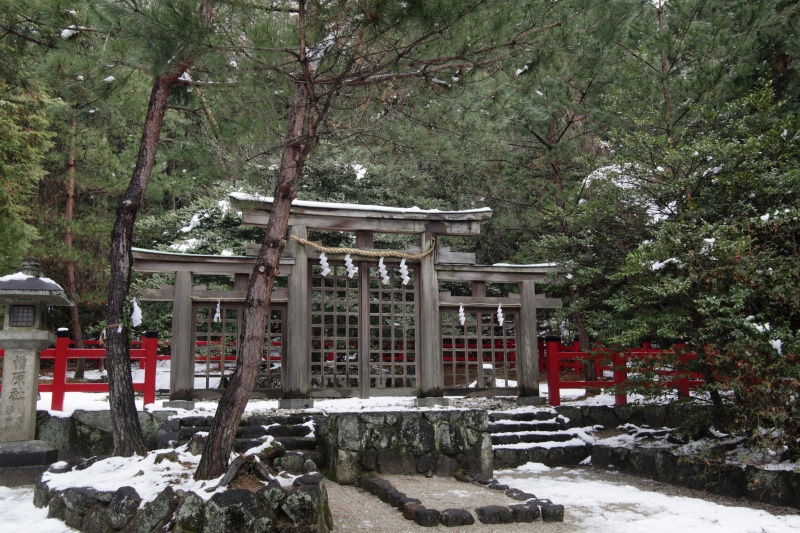
During the Kofun period (AD 250 to 538), powerful clan leaders and their families (called 豪族/gouzoku) started to emerge. Small kingdoms, each ruled by a different clan, were established. One of the most powerful, the Yamato, ended up developing a union between each state following many years of warfare.
As Yamato’s sphere of influence expanded, more clans pledged themselves to the Yamato. This resulted in more people working for the Imperial Court. Since there were so many people doing imperial things hanging around, we see the increasing need for the Yamato king to distinguish the status of each clan. Not all clans were created equal, you see. Some clans, for example, supported the Yamato from early on, while others jumped on the bandwagon later. To show the difference between the clans, they created a system known as the 氏姓制度 (Ujikabane-seido/ Shisei-seido).
Under this system, the Yamato Kingdom would choose a clan name (氏/uji) for each clan, as well as a 姓 (kabane), which is understood to be an inherited aristocratic title attached to an uji name. These were given to nobles living in the capital and to the most powerful clans subordinate to the Yamato rule. Thus, the 氏姓 (Uji-kabane/Shi-sei), which combines the uji and the kabane, became the means to classify different groups in the Yamato kingdom.
As a side note, the emperor was the one who designated the Uji-Kabane for each clan, so the Emperor’s family did not require one. The Imperial family in Japan didn’t have a family name back then, and it is a custom that remains even today.
Examples Of Ancient Uji-Kabane
The three most common 姓 (kabane) were
- 臣 (Omi)
- 連 (Muraji)
- 伴造 (Tomonomiyatsuko)
(Just to give you an idea of how this would work, if I were given the kabane “Omi”, I would then be known as Mami Suzuki-Omi.)
臣 (omi) and 連 (muraji) were the titles given to those of the highest status. Both were reserved for the most powerful clans, but there existed a fundamental difference between omi and muraji. Omi was given to the long time supporters of the Yamato clan, such as the 葛城 (Katsuragi), 春日 (Kasuga), 蘇我 (Soga), 巨勢 (Kose), 紀 (Ki), 平群 (Heguri), 波多 (Hata), 阿部 (Abe) and 穂積 (Hozumi) clans. Muraji, on the other hand, were given to the clans associated with particular occupations, such as the 大伴 (Ootomo), 物部 (Mononobe), 中臣 (Nakatomi), 土師 (Haji), 弓削 (Yuge) and the 尾張 (Owari). The most powerful clans with 臣 (Omi) were called 大臣 (Oomi). The same holds true for muraji as well. 連 (Muraji) would become 大連 (Oomuraji), but only for the top in their class.
The step below 連 (Muraji) was 伴造 (Tomonomiyatsuko), and this kabane was given to clans that were 司 (Tsukasa), aka the administration in governmental offices. Families such as 秦 (Hata), 東漢 (Yamatonoaya), 西文 (Kawachinofumi), 服部 (Hattori), 矢集 (Yazume), 犬養 (Inukai), 舂米 (Tsukishine), or 倭文 (Shitori) are included in this list. Of these clans, the first three were 帰化氏族 (Kika-shizoku), which means clans from other countries that had been naturalized as Japanese citizens.
Some of the above 氏 (uji) are not used anymore, but some do remain as family names today. Did you recognize any? However, it is still possible to encounter someone with one that is no longer used because somebody in their family at some point decided to change their name to one of those ancient uji names. So be aware that just because they have that name doesn’t mean that they share the long family roots of that ancient family.
Transition In The Uji-Kabane System
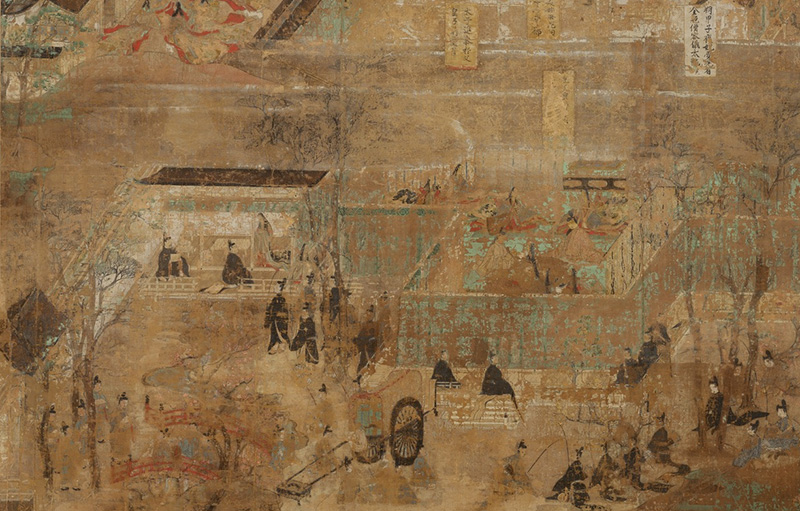
As some of you may have already realized, there was a major defect in this system. Just think about for a moment. What if a lot more people started working for the Imperial Court and each person worked at a different position? They would need assign some marker of identification not just to each clan, but to each individual, right? In order to solve the problem, Shotoku Taishi established 冠位十二階 (Kani-Juuni-Kai), which means the twelve level cap and rank system, in 604 AD. Despite having already given a kabane to each clan, titles in the new system were given to individuals depending on their political position within the Imperial Court.
Since the new system didn’t end the Uji-kabane system, the introduction of it just further complicated matters because now they had more titles to deal with. After the Taika Reformation in 646 AD, Japan united as a nation under the Ritsuryo codes, and soon afterward the Imperial Edict “甲子の宣” (Katsushi no Sen) was issued. This edict reduced the 12 ranks down to just 3, which were 大氏 (Oouji), 小氏 (Kouji), and 伴造 (Tomonomiytatsuko). The purpose of those ranks was to clarify which clan (Uji) belonged to which rank. It was a combination of the new and old systems. It additionally decreed a ban on having multiple uji. For example, there was a person whose uji was 蘇我石川 (Soga+Ishikawa), so at this time they were forced to decide to become either 蘇我 (Soga) or 石川(Ishikawa). It may have simplified the system a little bit, but complications still persisted.
The Royals And Nobles Raise Their Heads
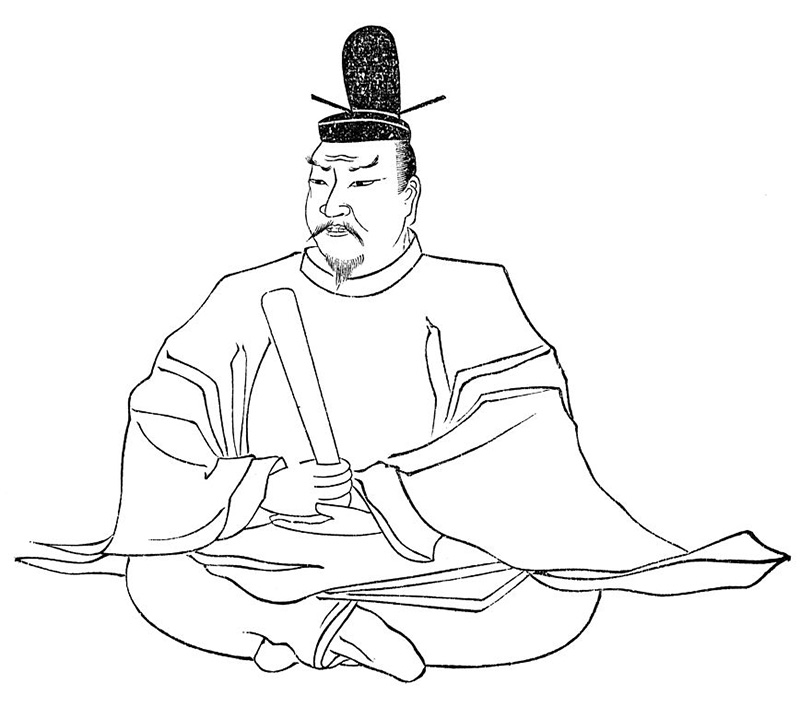
In the meantime, the Jinshin Revolt broke out in 672 AD following the death of Emperor Tenji who had originally designated his brother Prince Oama as his successor, only to later have second thoughts in favor of his son Prince Otomo. In the process of the violence caused by fractional rivalries, Otomo killed himself less than one year after acquiring reign. His uncle Oama then succeeded the throne as Emperor Tenmu.
Tenmu wanted to set the nobles apart from the powerful local clans, as well as organize the Uji-Kabane system, so in 684 AD he reformed the Uji-Kabane system into a system of eight 姓 (Kabane) called 八色の姓 (Yakusa-no-Kabane). At the time, he added 4 new 姓 (Kabane) , which were 真人 (Mahito) for the royals and 朝臣 (Ason/Asomi), 宿禰 (Sukune), and 忌寸 (Imiki) for the nobles. He then kept only three of the originals: 臣 (Omi), 連 (Muraji), and 稲置 (Inagi) for the local clans. As you can see, the powerful臣 (Omi) and 連 (Muraji) of the time were kicked off of their pedestal, so to speak. They found themselves demoted under this new system of royals and nobles. In 701 AD, it was even decided that those first four Kabane were to be granted certain privileges under the Taiho Code and the power of the clans became even weaker.
What About Family Names Of Common People?
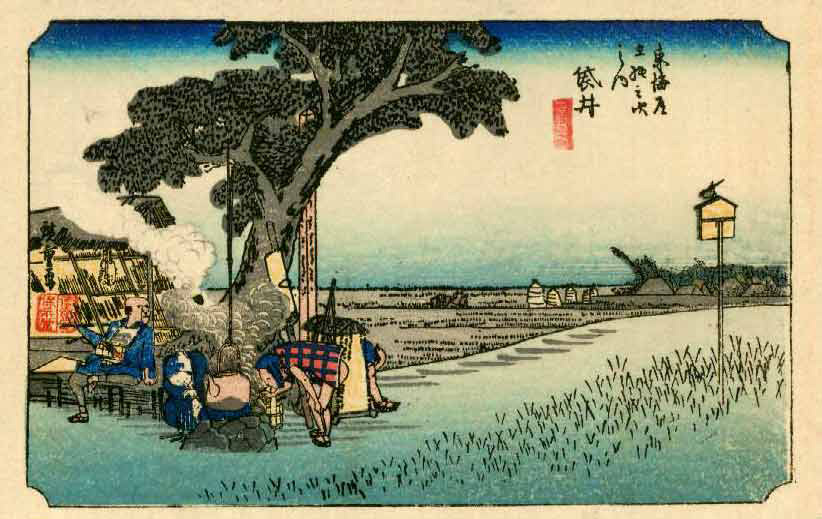
While the system regarding those of higher status was being restructured, so too was the system for the common people of Yamato Kingdom. These people were known as the 部民 (Bemin). A family registration system called the 庚午年籍 (Kougonenjaku) was introduced in 670 AD followed by another family registration system called the 庚寅年籍 (Kouinnenjaku) in 690 AD. Everyone was successfully registered and clan names and ancestral titles were given to the people. In other words, the Uji-Kabane system had expanded to the general public and uji and kabane became a way to reveal one’s social standing in the hierarchy of the state.
However, it was later realized by examining the existing registration book in 702 AD, there were still many people without Uji-Kabane. The Nara period started in 710 AD, and it took 47 years for the government to finally decide to never register people without given them an Uji-Kabane. But by 757 AD all citizens were officially registered with an Uji-Kabane of their own. Hooray! Sadly, this joy was short-lived. As the clans began to devolve into individual households, family lineage and status became more important than the social status of the clan as a whole. This caused the Uji-Kabane system to gradually fade from use.
Collapse Of The Uji-Kabane System
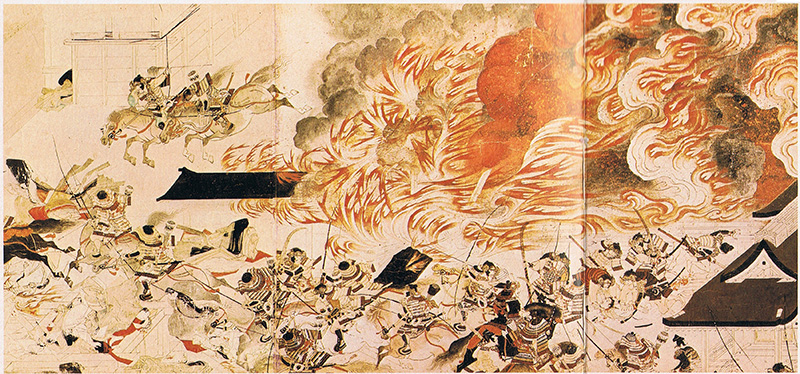
In the 9th Century, during the Heian period, 藤原朝臣 (Fujiwara-Ason) became the strongest clan under the regency. Furthermore, some emperors started giving Uji-Kabane to family members who were leaving the Imperial family. For example, Emperor Kanmu (737-806 AD) gave them the name 平朝臣 (Taira-Ason) to some family and the Emperor Seiwa gave his family members the name 源朝臣 (Minamoto-Ason). For these reasons, the Uji-Kabane system under the Ritsuryo code started to fall apart as a system of appointing particular names to individuals with certain skills emerged. Kabane became decidedly useless, and the family registry system under the Ritsuryo Code began to fade as well.
In the 10th century, some powerful local clans even became vassals of the influential nobles and changed their names. By doing so, they brought dishonor to the original clan names and ancestral titles. This act became quite commonplace and was called 冒名仮蔭 (Boumei-kain), which means “misrepresentation of one’s clan name and ancestral title”. On top of that, specific family lineages became fixed due to their type of business or trade. This brought about the movement towards changing uji after marriage and what one’s newly acquired name would be dependent on the new family’s business. (Before then, a person’s Uji was passed on to blood relatives and marriage didn’t change that.)
At that point, the variety of clan names in Japan began to dwindle and certain names became much more common, such as 源 (Minamoto), 平 (Taira), 藤原 (Fujiwara), 橘 (Tachibana), 紀 (Ki), 菅原 (Sugawara), 大江 (Ooe), 中原 (Nakahara), 坂上 (Sakanoue), 賀茂 (Kamo), 小野 (Ono), 惟宗 (Koremune), 清原 (Kiyohara), and so on. Because of that, there was an incredible upsurge in the number of families that shared the same name, especially the powerful 藤原 Fujiwara family. This occurred so often for such a time that they soon needed yet ANOTHER NAME to distinguish one family from the next. Hence, the nobles continued using uji names and Samurai families started using new names called 名字 (Azana/Myouji).
As for the kabane, it continued on merely, perhaps, because it existed before. In regards to its actual function, well, it was barely upheld as a public naming system until its demise in the beginning of the Meiji Period when the government created a law called 姓尸不称令 (seishifushourei).
What’s in a 名字?
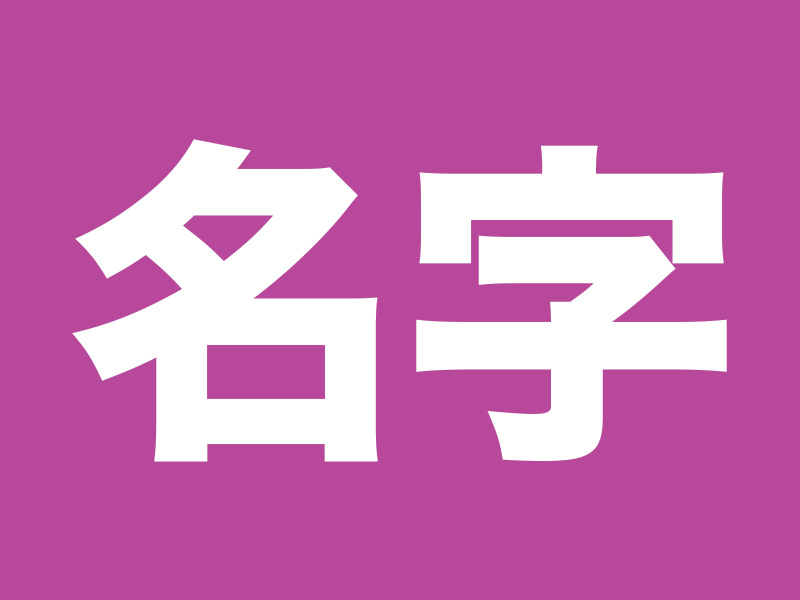
名字 means family name in Japanese and in modern times is pronounced “Myouji”. In the past, it was pronounced “Naazana”, which is believe to be a type of 字 (Azana in Japanese / Zì in Chinese), which was a formal nickname, of sorts. Historically in China, people had three elements to their name: 姓 or 氏 (family name), 諱 or 名 (First name – a.k.a. “true name”), and this 字 (Formal Nickname).
If you’re wondering why there would be a formal nickname, here is a brief explanation:
Since it was customary in ancient China to avoid calling a person of nobility or a deceased person by their (諱 or 名) true name, an 字 (Azana) was formally given to adult men and used instead of their given name. Originally, there was a difference between the kanji 諱 (Imina) and 名 (Na). The former was used for the dead and the latter was for the living. Later on, imina started being used for the living as well, but it was still the name a person had in death, so calling a man by his imina was considered extremely rude. All people practiced that courtesy, except the parents of that person, or that person’s lord/monarch/sovereign. Other than those few exceptions, people used another name, an 字 (azana), to refer to someone.
That custom was introduced by China to the other kanji using countries of Eastern Asia, including Japan.
The Beginning Of the 名字
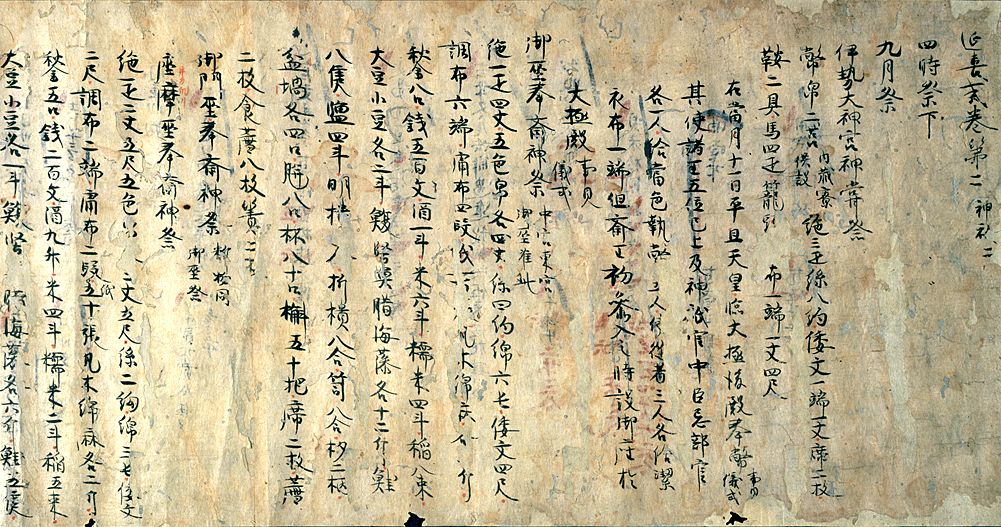
As mentioned in the previous names article, after the Ritsuryo code began, 氏姓 (Uji-Kabane) gradually faded from use as family lineage and status became more important than the social status of the clan as a whole. During that time, 名字 (Naazana) started being used to distinguish the smaller groups within separate clans. For example, even if two people belonged to the clan 藤原 (Fujiwara), different levels of power and influence existed between the different lineages, such as the 藤原北家 (Fujiwarahokke) and the 藤原式家 (Fujiwarashikike). Moreover, even among the same lineage, some factions were born under influential lineages, such as the 道長 (Michinaga)-line and 頼通 (Yorimichi)-line inside the 藤原北家 (Fujiwarahokke). The names that people began using to differentiate themselves from others in the same clan are believed to have been namesakes from the places in which they were born.
When naazana began being used, it was called 号 (Gou) and was actually only used for one generation, meaning that it was not passed on to children. However, people eventually came to realize that calling a family by their actual family name was very practical. Thus, in the late Heian period, the naazana started being passed down to descendants as well. Different from the Chinese usage of official nicknames, which were used as replacements for first names, in Japan naazana were official nicknames used to replace a family name. There was an official nickname for first names in Japan, called 通称 (Tsuushou) which were used by the Samurai, but nobles just continued using their 諱 (Imina), which was their true first name. (By the way, the word nickname nowadays in Japan is pronounced as あだな (Adana) which is believed to have come from 字 (Azana).
Samurai And Their 名字

In the meantime, the Ritsuryo system collapsed and Samurai groups (known as 武士団/bushidan) started forming in order to manage the manors of noblemen, or even to protect the lands and assets that they had earned for themselves. In order to claim the right to own such lands, those samurai groups started using the land name as their naazana alongside their ujikabane, or clan name. In time, these naazana started being passed on to family members as well.
In the Kamakura period (1185-1333 AD) as the regions held by Samurai groups expanded, some powerful samurai groups found themselves in control of multiple territories. At the time, many samurai started dividing their assets to distribute to their children. Even if an illegitimate child inherited a territory from the family that it was not originally from, they changed their naazana to the name of the territory. Furthermore, they cultivated new lands and the overall area that was inhabited increased. Once they settled down in a particular place, they started using the name of the region as their family name. This caused the number of naazana used by the samurai to increase.
And, just as a reminder, they still had ujikabane at this time, too. For example, 新田義貞 (Nitta Yoshisada) and 脇屋義助 (Wakiya Yoshisuke) are brothers. Although they both have different naazana – 新田 (Nitta) and 脇谷 (Wakiya), their ujikabane was 源 (Minamoto). So their official names were 源義貞 (Minamoto-no-Yoshisada) and 源義助 (Minamoto-no-Yoshisuke). Since the ujikabane name was still considered to be their official name, it started being called 本姓 (Honsei), meaning true family name, around the Kamakura period.
Maybe you picked up on this already, but when a true family name was provided by the emperor, they added a の (no) between the official clan name and their first name. This way of reading them has been the same since the ujikabane system began. In other words, someone was only allowed to add the “no” in between their names if it was provided by the emperor. The naazana that people gave themselves, the ones that derived from the region they lived in, were not permitted this distinction.
名字 Comes To The Forefront
As stated above, samurai had official nicknames. Unlike the nobles, they tended to use that rather than their actual first names. Because of this, samurai had four parts to their name: a true family name (their clan root), and official family lineage name, an official nickname for their first name, and a first name.
When the Edo period came about (1603-1808 AD), the ways in which a true family name was used became very limited. They only used it on the occasion when they formally received an official rank by the emperor. They barely used it in their daily lives, though. So, the naazana that people used in that time began functioning in much the same way that our family names function today. During this period, the kanji 苗字 (myouji) assumed the role that the kanji 名字 used to serve because 苗 better signified the idea of a family blood line.
Since naazana were not names given by the emperor, anybody could have one, including commoners. This was true until the Edo Shogunate decided to disallow common people from having naazana, except for a few prominent families. Therefore, commoners entered another long period in which they were only allowed to have a first name.
Family Names In Meiji Period

For a while, the Meiji Government followed the Edo Shogunate’s ruling regarding myouji, yet their decisiveness on many policies often swayed. In 1868 the Meiji government decided to revoke the names that only a select group of commoners were allowed to have and banned them from having family names. In the same year, they also banned the Shogunate from bestowing family names to feudal lords or other people under their influence. This was done was to prove a point to the Shogunate. After this, they again allowed the policy to be open to interpretation and informed commoners that the government could issue them family names if they were to render their services to them.
When the Boshin War between the Shogunate and Meiji Governement ended in July of 1869, lands and people were returned to the Emperor. Accordingly, they reverted back to the former system of family naming, going from 苗字/名字 (Myouji) to 氏姓 (Ujikabane/Shisei) a.k.a. 本姓 (Honsei) . However, most of the people who were originally part of nobility became 藤原 (Fujiwara) and most of the people who were originally part of the samurai became 源 (Minamoto). Amazingly, 86.4% of Japanese family names became one of four names: 源 (Minamoto), 平 (Taira), 藤原 (Fujiwara), or 橘 (Tachibana). This system was not at all practical and it also didn’t fit with the times. It was revoked very quickly.
Establishing The Modern Legislation
In 1870, being led by the Ministry of Finance who was trying to modernize Japan, the policy for family names started to change course. The 平民苗字許可令 (Heiminmyoujikyokarei), which was a law allowing commoners to have family names, was officially announced on September 19. However, a lot of people were very suspicious of the law. It’s said that a common belief at the time was that they might have to pay tax if they decided to use a family name. As a result, very few people opted to have a family name. Monks also refused the policy claiming that by entering into priesthood they didn’t need a family name. Because of that, a law called 住職僧侶名字必称義務令 (Juushokusouryomyoujihisshougimurei), which forced monks to have a family name, was enforced in 1872.
Even after that, common people still hesitated to use family names. In response, the government created another law, 平民苗字必称義務令 (heiminmyoujihisshougimurei), which forced everyone to have family names and that went into effect February 13th, 1875. Due to having a family name being a kind of “duty”, we now have a “Family Name Day” in Japan (苗字制定記念日/Myoujiseiteikinenbi), which means “Commemoration Day for the establishment of family names.” Of course, this is celebrated on February 13th each year.
Between the two laws above, there were also some other changes to family name policy. For example in 1871, another law called 姓尸不称令 (Seishifushourei), was issued which banned the use of ujikabane, aka honsei. All the terminology was very confusing too, so they categorized 本姓 (Honsei) as “姓 (Sei)”, 氏 (Uji/Shi) and 名 (Naazana/Myouji) as “苗字(Myouji)”, and lastly, 姓 (Kabana) as “尸 (Shi).”
Furthermore, according to 太政官布告 (Daijoukanfukoku), which means Proclamation by the Grand Council of State, legally registered names became very difficult to have changed. Because of that, people questioned the government about the right to change their wife’s family name after marriage. Changing a woman’s family name to that of her husband’s family name was tradition at the time. In 1876, in response to this debate, the Daijoukanshirei decided that wives and husbands must keep their own family name and it can’t be changed following marriage. The system of husbands and wives keeping separate family names lasted until the 明治民法 (Meijiminpou – Meiji Civil Code) was enforced in 1898. At long last, we have reached the system of family naming that is used today.
The kanji for Myouji was 苗字, but after the simplification of the Japanese writing system following WWII, 苗 didn’t find itself on the new list of kanji, and 名字 became the popular usage. However, all four kanji 名字, 苗字, 氏, and 姓 are still used to indicate family names today. For example, as a legal term 氏 is used since it’s used in the Family Registration Act by the Ministry of Justice. In the education system, 名字 is used since the Ministry of Education, Culture, Sports, and Science decided to use it. In fortune telling, usually 姓 is used as a family name.
And Here We Are
Before the Meiji period, some people had family names passed on from their ancestors and others adopted the same family name as the most influential regional family. So entire communities actually shared the same name, but they did not share the same blood. After the Meiji period, people were suddenly forced to legally resister their family name. Some of them changed their traditional family names to one they favored, while others just made up their own names. Among those that were created, some of them were simply taken from a historically famous family, whose origins date back to ancient Japanese, so even if you encounter someone with a family name of a seemingly ancient past, it’s very likely that there are no blood ties.
Anyways, that right there is the long and complicated history of Japanese family names. Now that you know about it, it becomes no surprise that such a vast variety of names exist. I presume it’s very difficult to read or memorize Japanese family names for many of you, but don’t fret. It’s actually the same for us, native of Japanese. Just remember common family names and make an effort to remember the more unique ones whenever you come across someone with one. Before starting out on this article, I had no idea how long and rich the history of Japanese names was, but I’m certainly happy to have researched it. I found it fascinating and I hope you did too.
Do any of you have an interesting story that follows your family name, or its meaning? If you do, please share your story in the comments. Thank you!
